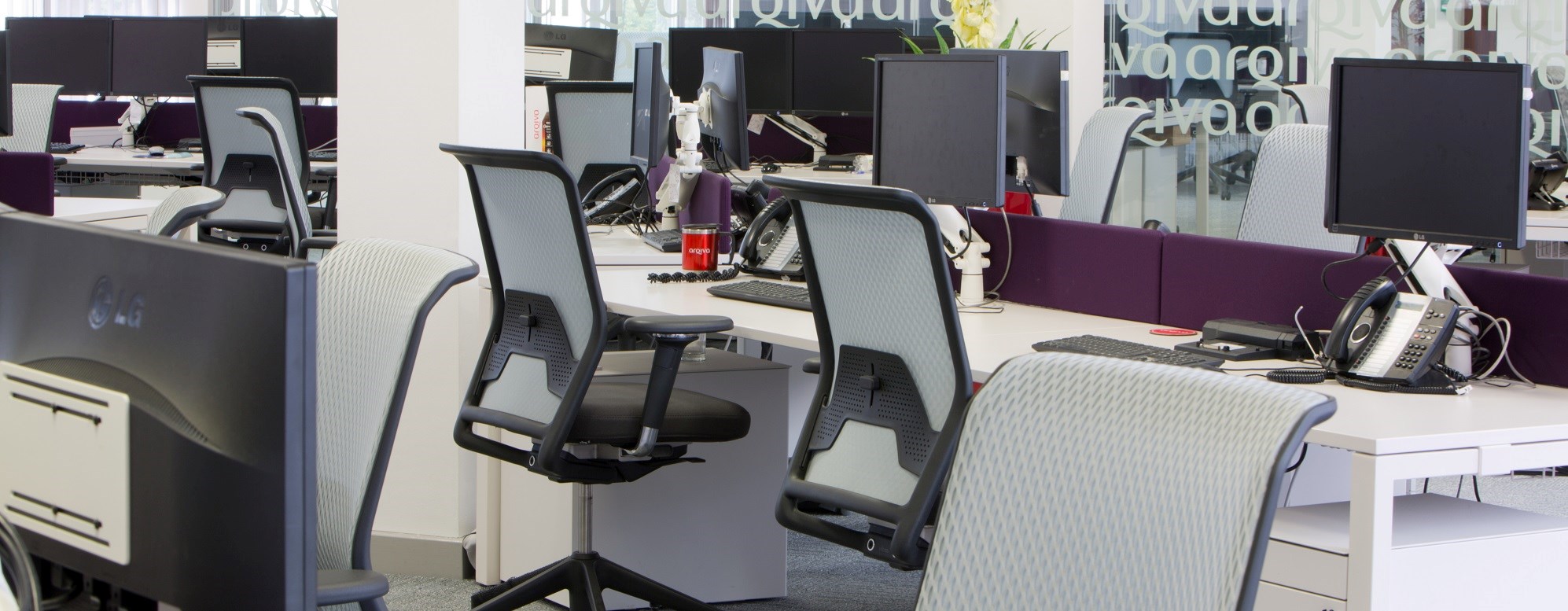
NHH students with a new master’s thesis about working from home
Master's degree students Andreas Vestre and Kristian Wøien Stø felt there was a lack of quantitative research on the effect of working from home. Their data analysis indicates that many make more efficient use of their working hours when working from home.

When Andreas Vestre (26) and Kristian Wøien Stø (24) were going to write their master’s thesis, they wanted to see if it might be possible to conduct a quantitative survey on working from home.
‘Much of the research in the field consists of quantitative surveys based on people’s perceptions of how they have performed,’ Kristian W. Stø says.
Of high interest
Vestre and Stø submitted their master’s thesis ‘Working or Shirking From Home?’ in autumn 2020. Associate professor Steffen Juranek of the Department of Business and Management Science was their supervisor.

‘The effects of working from home is currently of high interest because so many of us are affected by it. But the topic is also important in the longer run as we would like to understand how the future of work looks like. The study contributes to our understanding by quantifying differences in this specific setting’, Juranek says.
‘We wanted to look at how things actually turn out as a consequence of working from home,’ they answer when asked why working from home became the topic of their master’s thesis.
Followed the debate in the media
The idea and motivation for the thesis came from the increasing debate about working from home in the Norwegian media.
‘It’s a topic many people have an opinion about. Working from home very quickly went from being an option only available to the few to becoming very common – and it happened almost overnight,’ explains Stø.
‘There was a lot of talk in the media about whether working from home functions or not. It’s something almost everyone has a view about. Are we more productive when we work from home? ‘Do we have less downtime? How does it affect the quality of the work we do? So, we really wanted to find out what is actually true as regards working from home,’ adds Vestre.
A thorough approach
In August 2020, work started on the thesis, and the students contacted different parties they wanted to cooperate with.

The master’s degree students were given access to data from the customer call centre at a big banking and insurance company. The data were sorted into six different databases, which had never been compared before.
‘After an employee of the company had collected the data for us, we could start the analysis,’ says Vestre, who personally likes analysing big numbers of figures.
The standard they set for the data they collected was that the work tasks involved should be standardised and repetitive, so that they were measurable.

Wants to modernise Norwegian food production
‘That was essential. We had enough data that could tell us something about their productivity. The data we ended up with were from the period between January to the end of August. The staff were more or less equally divided between working from home and working at their place of work during this period. We wanted to compare daily productivity goals per employee working at home, versus at the office based on 10,000 observations.’
More efficient at home?
‘We looked at the staff’s work tasks. For instance, taking a phone call, answering it, taking notes of the conversation – thereby completing the task. We wanted to study whether they spent more time on this task. We also had the opportunity to observe how long breaks they took, because they logged out of the system to do so. We wanted to see how efficiently they carried out their tasks at versus at the office and how they allocated their time,’ says Stø.

Secured her dream job early
The students say that they are fairly certain that the significant findings they found through their analyses are exclusively attributable to whether the subjects were at home or in the office.
‘What did you find out?
‘The staff spend a little less time on the phone when they work from home. They also spend less time writing notes from the phone calls. This means that the time they actively spend on carrying out their work is more productive,’ explains Vestre.
Fewer interruptions away from the office
The NHH students believe that the main reason for this is that there are fewer distractions when you work from home. Normally they work in an open-plan office.
‘However, the staff also appear to take more frequent and/or longer breaks when they work at home. The result is that the two effects cancel each other out, so that the net effect is that that there is no difference in daily productivity: i.e., the number of telephone calls they answer.
Furthermore, the students have also studied how the customer perceived the staff. They distributed a separate survey among the staff.
‘What appears to be significant for how they performed at home was each individual employee’s motivation,’ emphasises Stø.
Collected their own data
‘By conducting a survey among the staff, we found out that the members of staff who performed better or worse when working from home were aware of this. The employees who believed they performed better at home, actually did perform better at home, and vice versa. That is very interesting. What we also discovered was that whether they thought they performed better or worse when working from home had no bearing on what they wanted in future. Someone who performed badly at home was as likely as to want to continue working from home as someone who performed better at home.
From the survey they distributed, they also discovered that working from home has led to more loneliness among employees who live alone.

Hawrylko voted one of Norway's best tech-heads
‘Those who want to work from home are mainly people with children of school age, a short commute or with other family members who are also working from home,’ concludes Vestre.